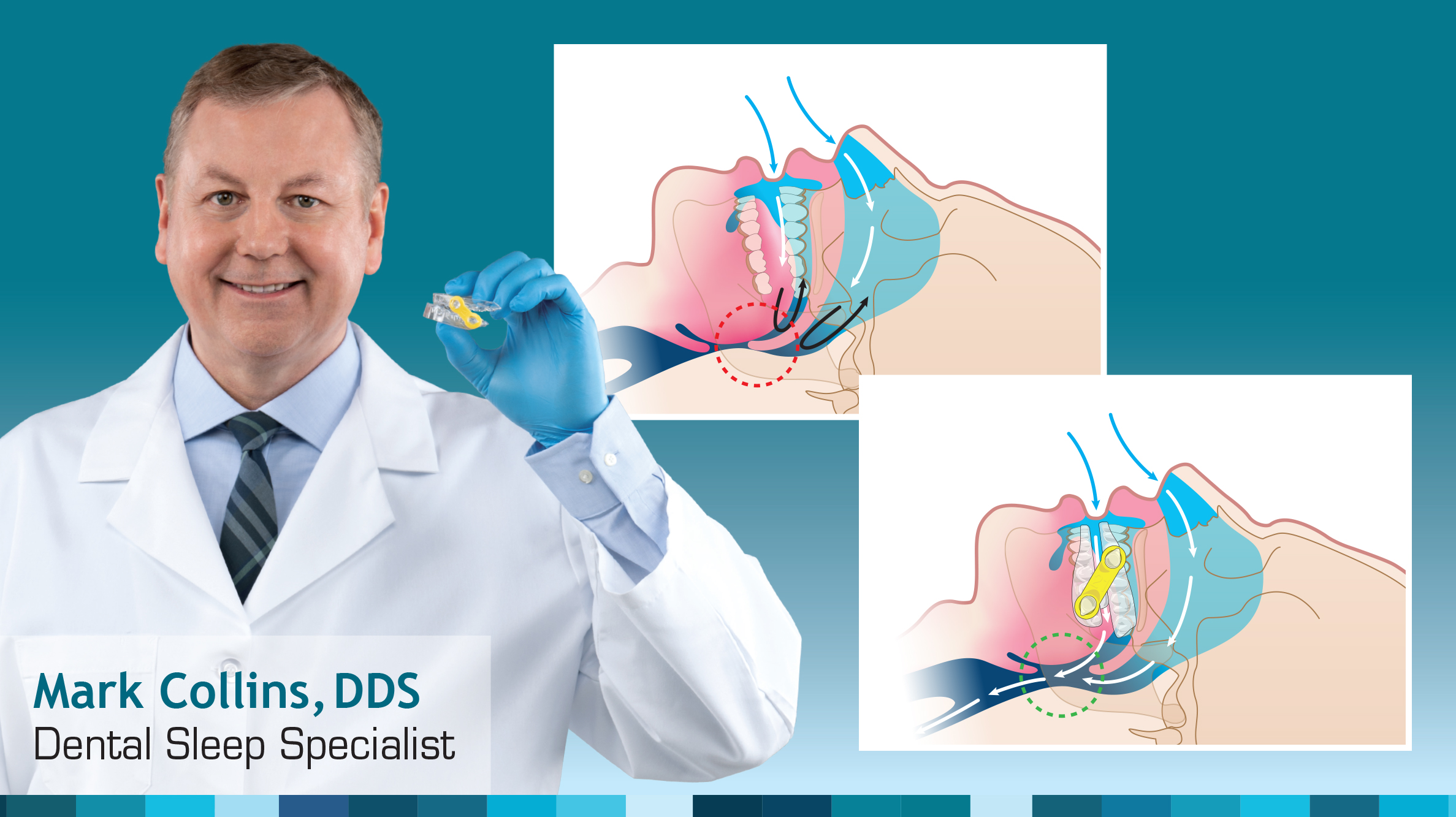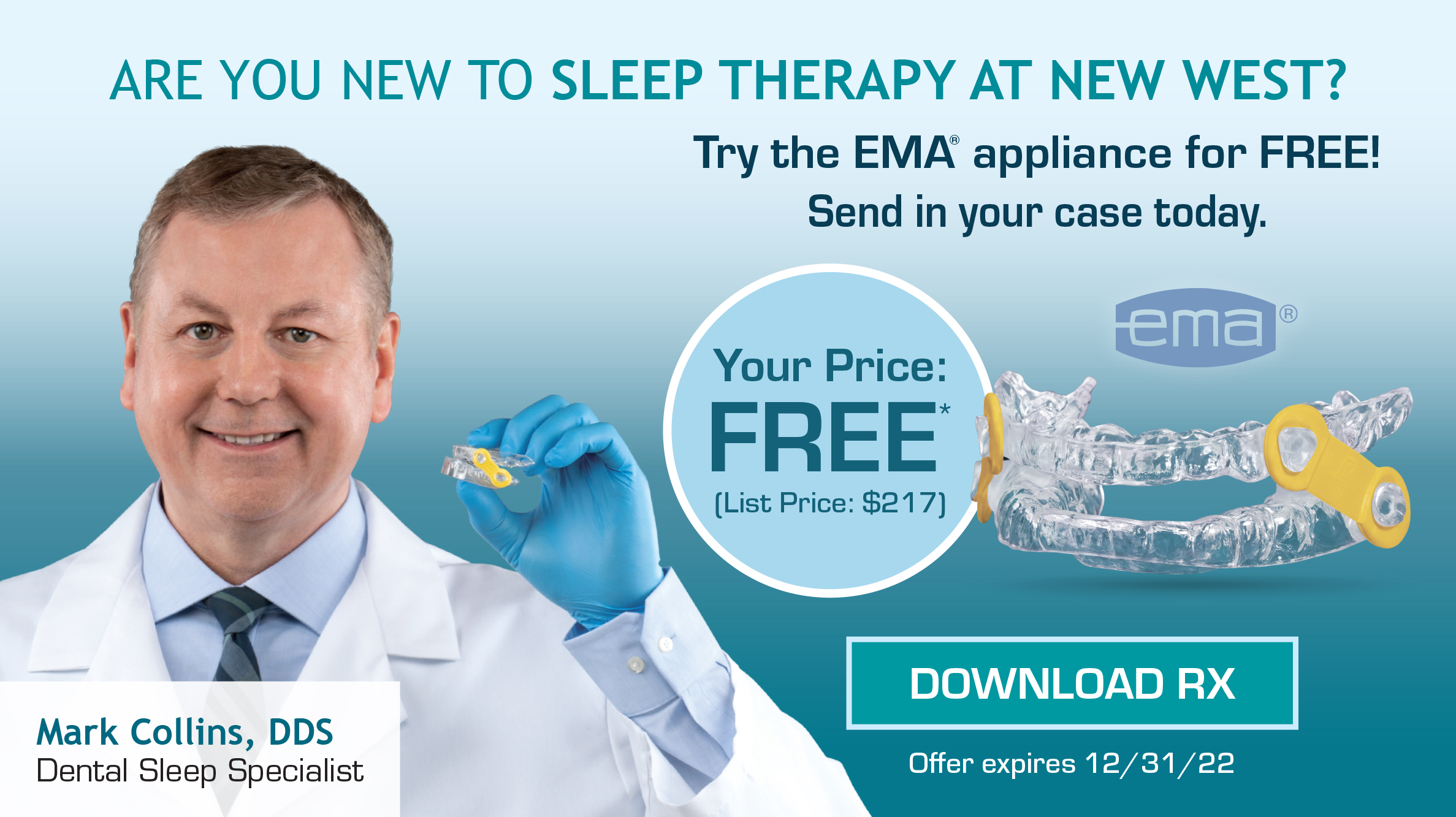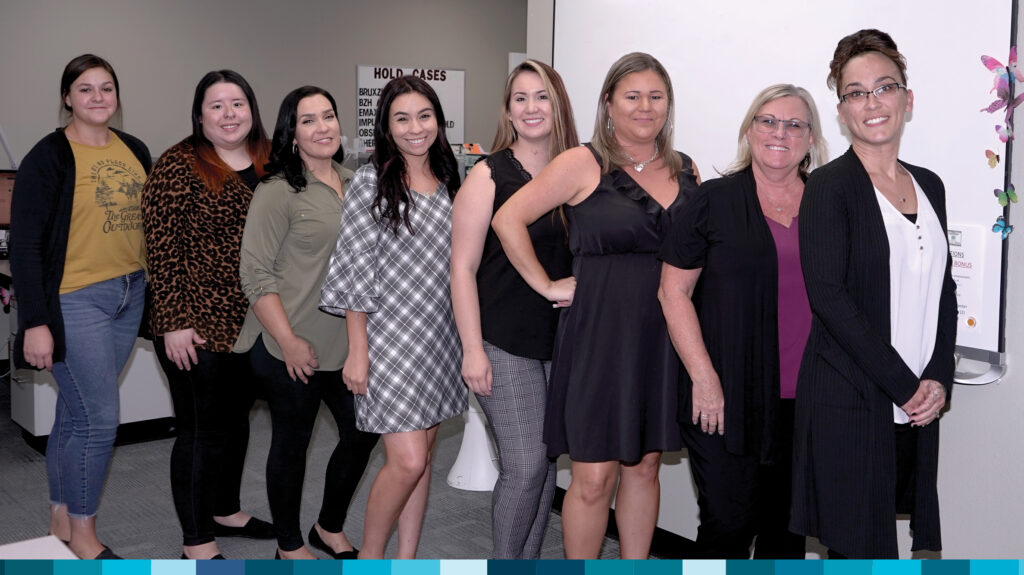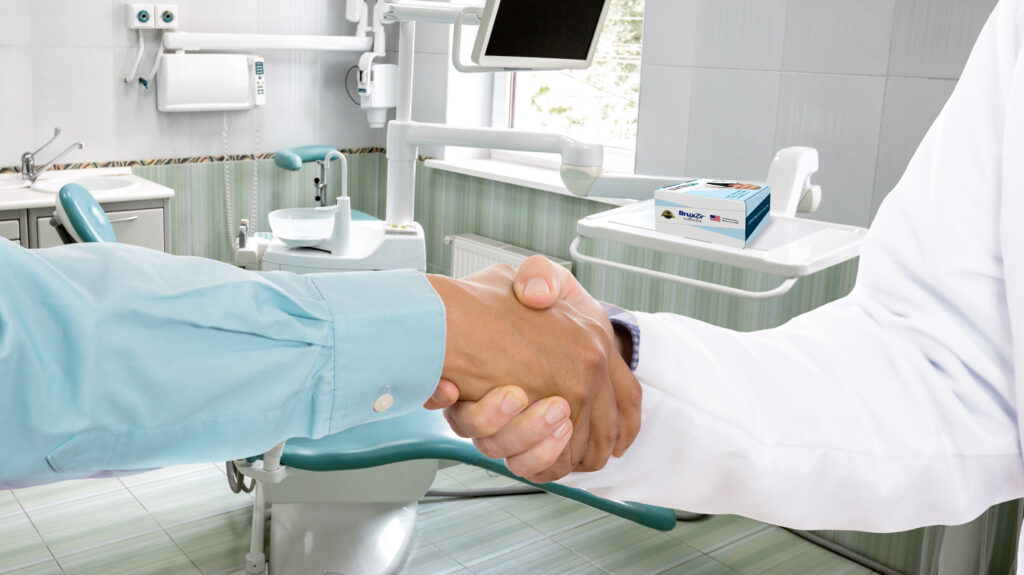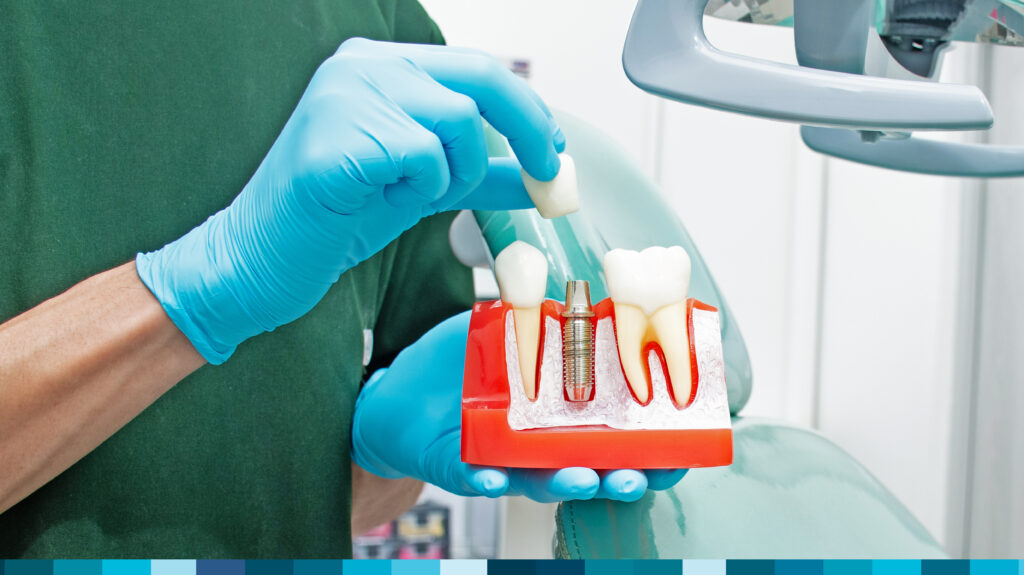Snoring and sleep apnea are conditions of the airway. When a patient is asleep, the tissues of the airway relax, the tongue falls backward, and the airway begins to collapse. Snoring is the sound that occurs from a partially collapsed airway — as air rushes over the relaxed tissues, they vibrate and create the snoring sound. A fully collapsed airway is silent. There is no airflow as the patient struggles to breathe, often several times per hour. This condition is called sleep apnea.
Dentists can provide nightguards that will position the jaw forward, which pulls the tongue out of the airway, tensions the muscles and ligaments of the airway, and provides enough tone so that there is no vibration. Patients who wear these nightguards breathe soundlessly through their nose.
One of the most popular nightguards for this purpose is the EMA® (Elastic Mandibular Advancement) appliance. Houston-based orthodontist Dr. Donald Frantz developed the EMA appliance in 1993 to address his personal snoring and sleep apnea condition. In collaboration with his son Michael, who ran a local orthodontic lab at that time, Dr. Frantz decided that any appliance he designed would need to be comfortable for the patient, inexpensive, and easy for the dentist to deliver. These features were part of the appliance design from its inception and continue to characterize the appliance today.
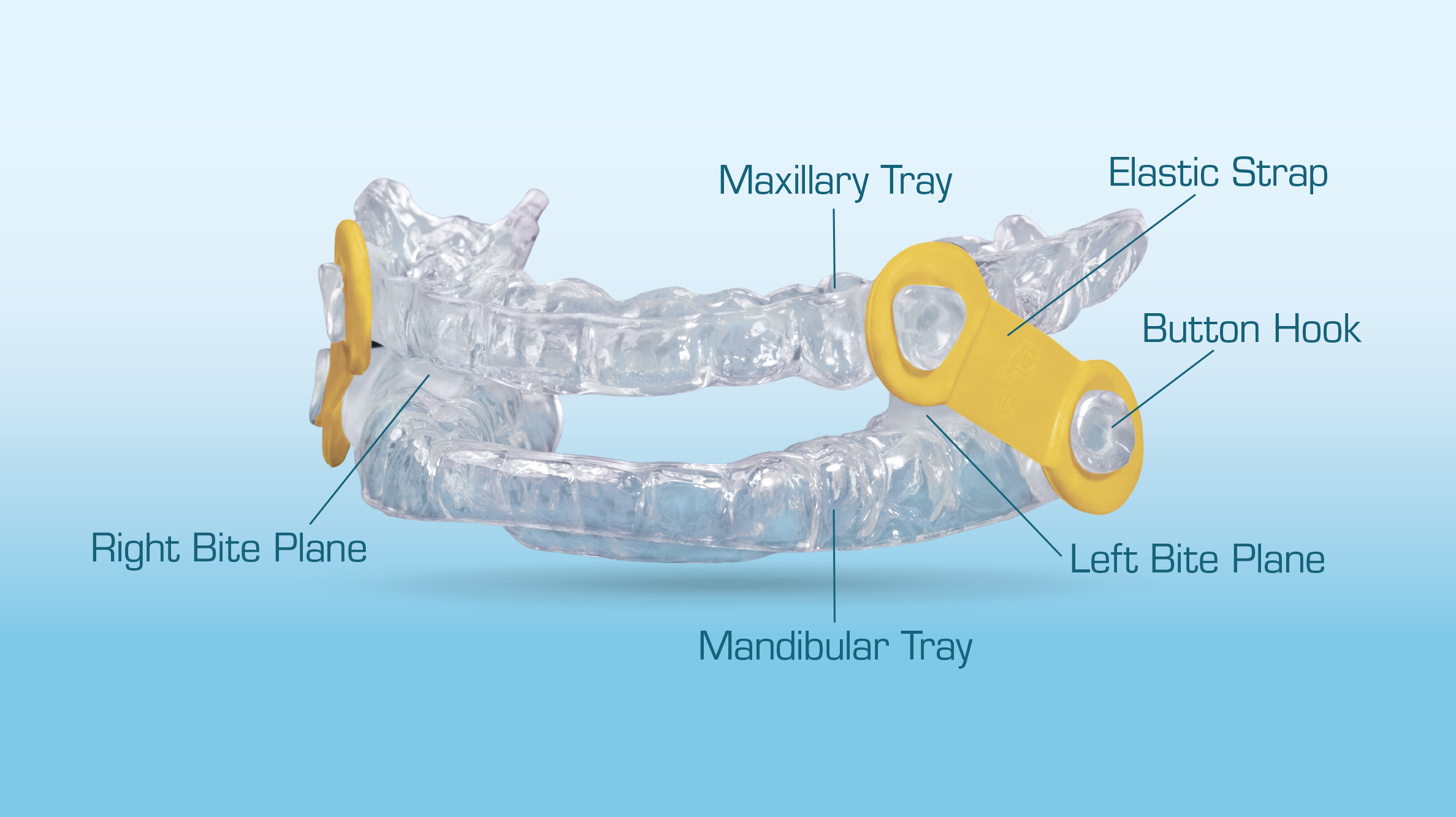
EMA: How It Works
The design of the EMA appliance is very straightforward: It’s simply an upper and lower nightguard joined with elastic straps for patient comfort. The EMA is a bilateral hinge appliance that uses oblique traction to maintain mandibular position during sleep. The mandible is adjusted by changing the length of the elastic straps in 1 mm increments.
Patients like the fact that their mandible is not locked into any specific position, while dentists like the ease of fabrication and delivery. The EMA is a very forgiving appliance both chairside and in the home.
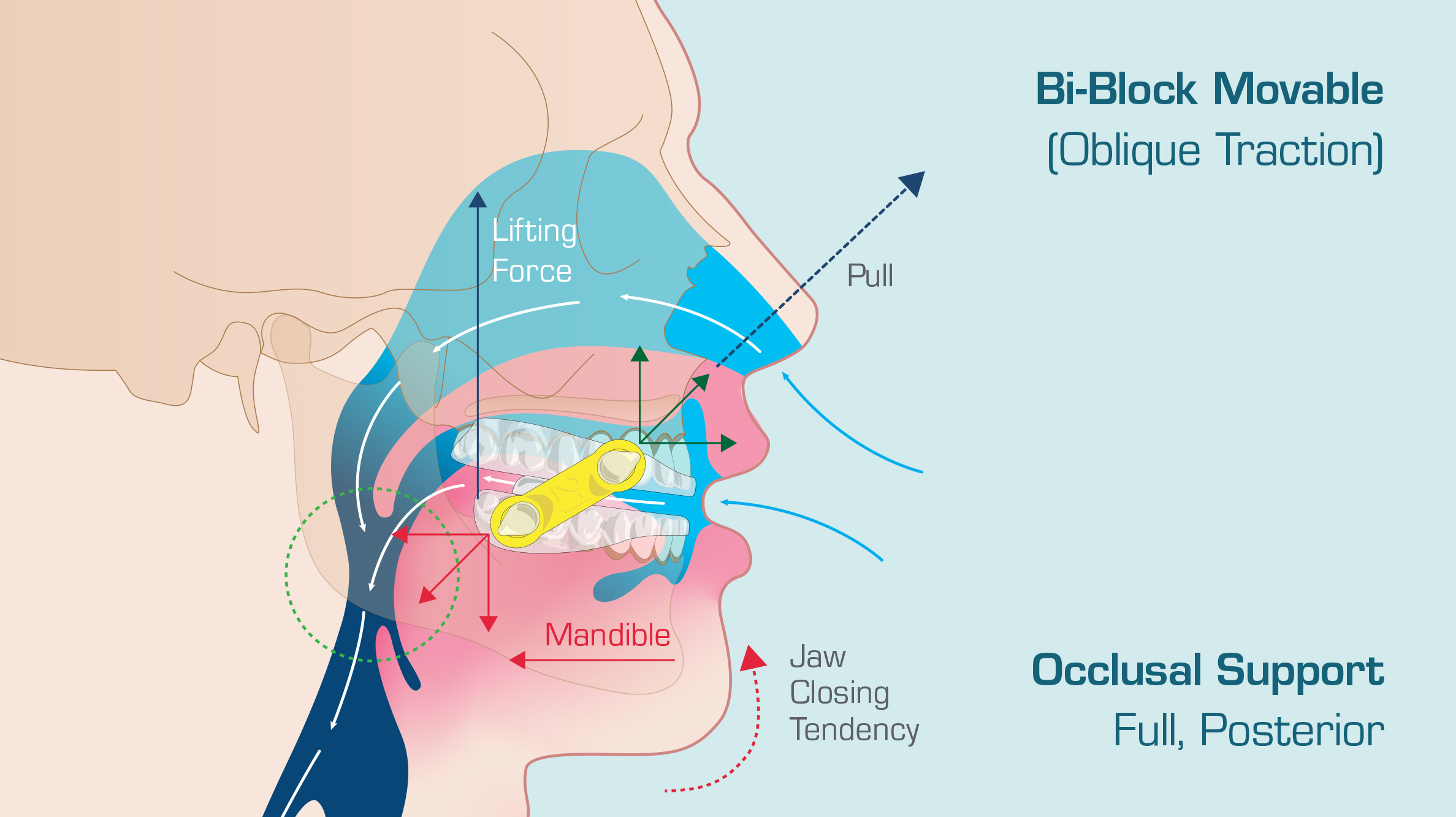
It is important to know that the elastic nature of the straps means that, as the patient wears the appliance, the straps stretch. The clinician should monitor the straps for stretch, usually during regular follow-up appointments. If the straps have stretched, they should be replaced. Some dentists have the patient replace the elastic straps every 30 days.
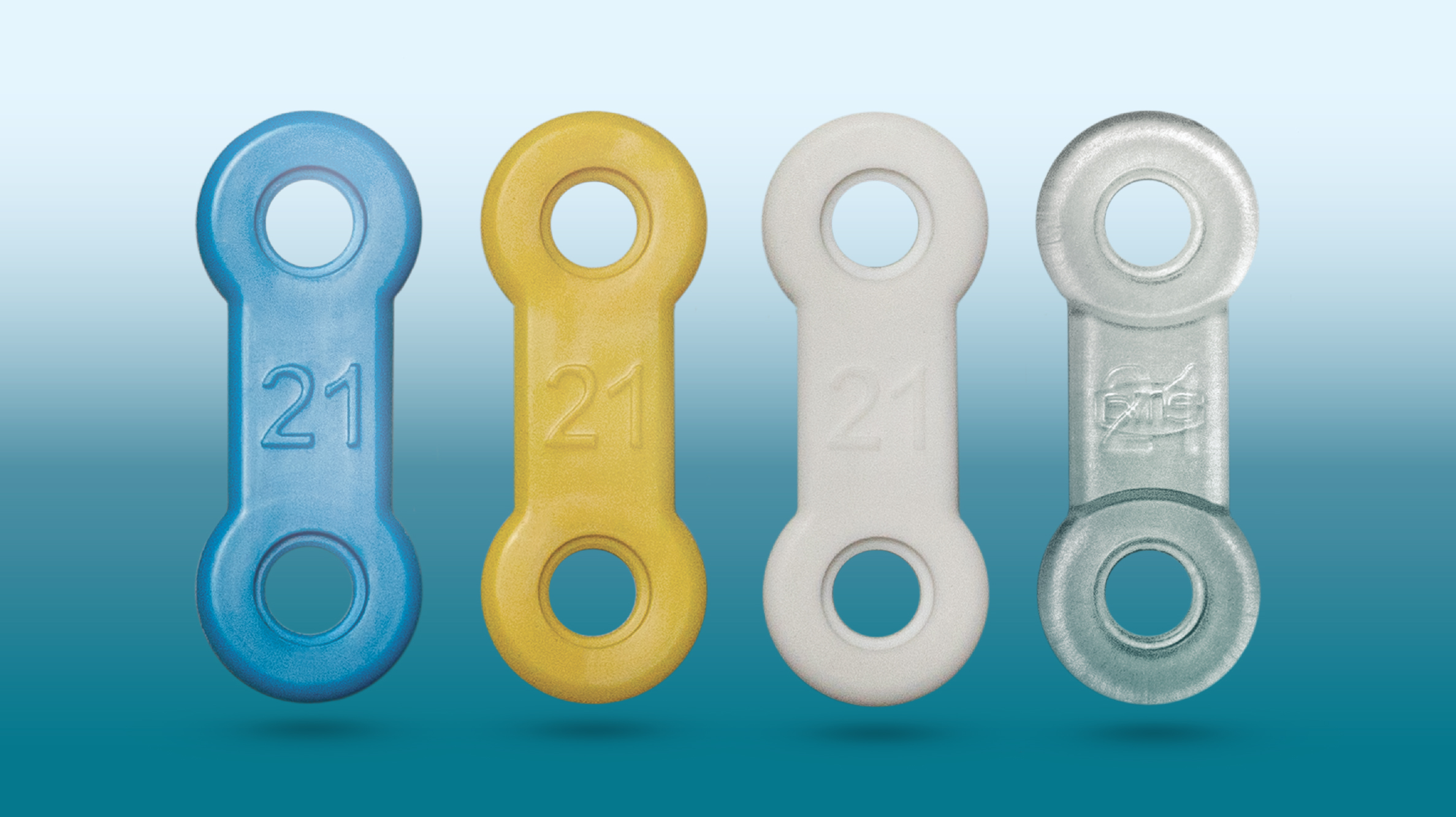
EMA has four strap strengths and nine strap lengths. These 36 different strap combinations allow the dentist more control and flexibility when treating snoring and sleep apnea.
When making an EMA device with standard occlusal bite pads, the appliance will have about 8 mm of vertical space. The strap retention hooks are about 25 mm apart. It is customary to start the patient with a 21 mm strap (yellow) with an end-to-end occlusal relationship (about 3–4 mm advanced).
In many cases, the patient will be able to wear the appliance all night long the very first night. The whole family sleeps great. That isn’t always the case, however. Some patients need a few nights to get used to a nightguard. If the patient is still snoring while using the appliance, strap changes are necessary and should follow the following protocol:
If on week two the patient still has some snoring and no TMJ pain, shift to a 19 mm strap. If snoring persists, but there is no pain after three or four nights, then transition to the 17 mm strap. If the snoring persists, consider the 15 mm strap or add some acrylic to increase the vertical dimension of the appliance.
Every patient is different and, clinically, we need to be patient if the full effect of therapy is not immediate. Of course, we want to hear that the patient is not snoring; rather, the goal is for the patient to wake up rested and full of energy, with no daytime sleepiness.
Is EMA an Effective Appliance?
When the EMA appliance was developed, modern dental sleep therapy was in its infancy. There were very few objective studies that had been conducted showing the efficacy of oral appliances for the treatment of snoring and sleep apnea.
Dr. Frantz approached University of Texas sleep physician and researcher Dr. Samuel Kuna about doing a small trial on a few sleep apnea patients. Dr. Kuna used the local success of the EMA appliance to apply for an NIH grant to examine the appliance in the sleep lab.
The resulting study, “An oral elastic mandibular advancement device for obstructive sleep apnea,” set the tone for oral appliance studies for the next decade or so. I was particularly struck by two of the study findings: First, that 19 out of 28 subjects had at least a 50% reduction in symptoms with the device. Considering that the titration of a sleep device was still brand new at the time of the study, this was a great result. Second, that “the site of airway closure should not be used to exclude patients from this oral device treatment.” Since this study was published in 1999, there have been several studies that look at how mandibular advancement devices (MADs) work, and there is a great case to be made that just stabilizing the tissues of the airway is enough to get a therapeutic effect.
Prescribing the EMA Appliance in the Dental Practice
The EMA snoring and sleep apnea appliance has been successfully used to treat patients in the United States for nearly three decades. The device has been shown to be beneficial for snorers and obstructive sleep apnea patients. The EMA appliance is inexpensive enough to be provided for snoring only, which is an excellent way to build patient loyalty with existing patients, and it will provide a reason for new patients to come into the dental practice.
For dentists who are considering starting in the field of snoring and sleep apnea treatment, the EMA appliance is fabricated with a simple end-to-end bite. Impressions can be taken digitally or by using conventional materials.
New West Dental Ceramics is confident the EMA device can be successfully utilized in any dental practice. As such, the lab is offering a special introductory offer to customers: New West will make an EMA appliance at no charge for any dentist who is new to sleep therapy and would like to try the appliance or use it for a patient demonstration model.* This limited-time promotion is designed to help remove barriers to treatment, so your patients can begin experiencing the health benefits of sleep therapy. Simply click here to download the promotional Rx or call 800-321-1614 to get started.
*Special pricing does not include shipping or applicable taxes. Offer applicable for a maximum of one specially priced Rx per account, for new customers who have not prescribed a sleep appliance with New West Dental Ceramics. Special pricing not valid with any other offer. Promotion expires 12/31/22.
EMA is a registered trademark of Frantz Design Inc.

